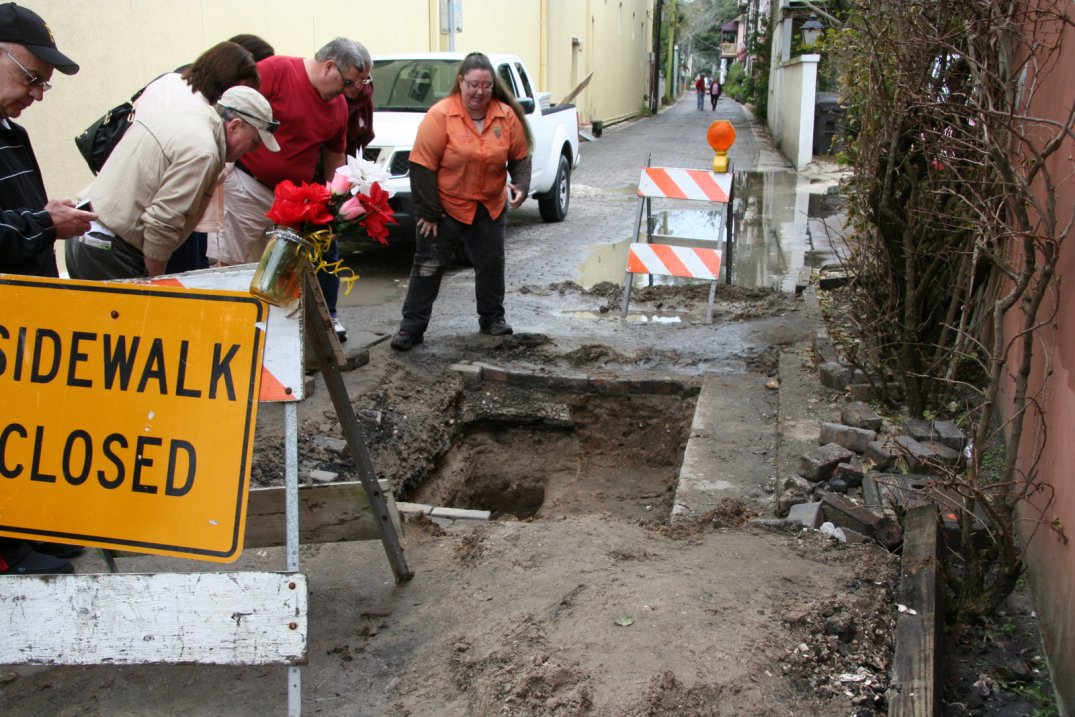By Lindsay Tahan | gargoyle@flagler.edu
City workers digging under Charlotte Street in St. Augustine uncovered bone fragments from a historic Catholic church and its cemetery.
Some of the bones may more than 400 years old, according to city archaeologist Carl Halbirt.
The cemetery was called Nuestra Señora de los Remedios, or Our Lady of Remedies. It was linked to a Catholic church that was founded in around 1572 and remained in use until 1702.
“It was a Catholic cemetery so people of Catholic faith were buried here in the Los Remedios cemetery. St. Augustine had a diverse population consisting of Spanish, African Americans and Native Americans. The people who would be in this cemetery would be comprised of these three ethic groups,” said Halbirt.

Passersby and the curious gather as archeologist Mischa Johns explains the history of the newly discovered remains along Charlotte Street. Photos: Jake DeBellis

 Workers who were preparing for a utility line project discovered the remains in January. Halbirt and volunteers from the St. Augustine Archaeological Association were called in to assess the site and make sure that any historically important findings wouldn’t be disturbed.
Workers who were preparing for a utility line project discovered the remains in January. Halbirt and volunteers from the St. Augustine Archaeological Association were called in to assess the site and make sure that any historically important findings wouldn’t be disturbed.
After the remains were discovered, some residents stopped to leave flowers at the site in memory of the dead.
Halbirt said Nuestra Señora de los Remedios was associated with the first parish Catholic Church of St. Augustine. The Church was destroyed in 1702 when the English from Carolina laid siege on the nearby Castillo de San Marcos for 51 days.
Halbirt said it is hard to say whether the discovered bones are from adults or children. Some of the bones had already been damaged during past underground utility work. However, Halbirt said some of the bones were robust, suggesting an adult, and some were small and could have been that of an adolescent.
“These bone fragments are just being found in the soil matrix,” he said. “No particular tools were being used. If we were to discover more intact remains then tools will be used that will not affect the bones such as wooden objects like wooden spoons and chopsticks. We are unsure on whether they will find any bone intact as of now.”
Halbirt and his crew planned to contact the Catholic Church and return the bone fragments so they could be properly buried.
The new utility lines are expected to be installed in late 2016 or early 2017.



Be the first to comment on "Workers discover centuries-old bones"